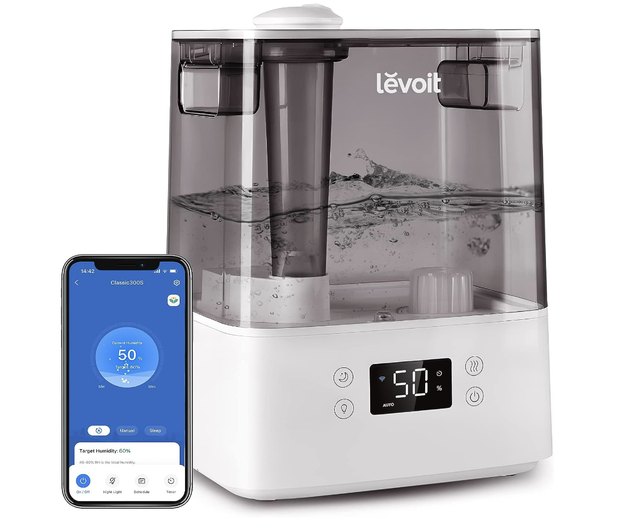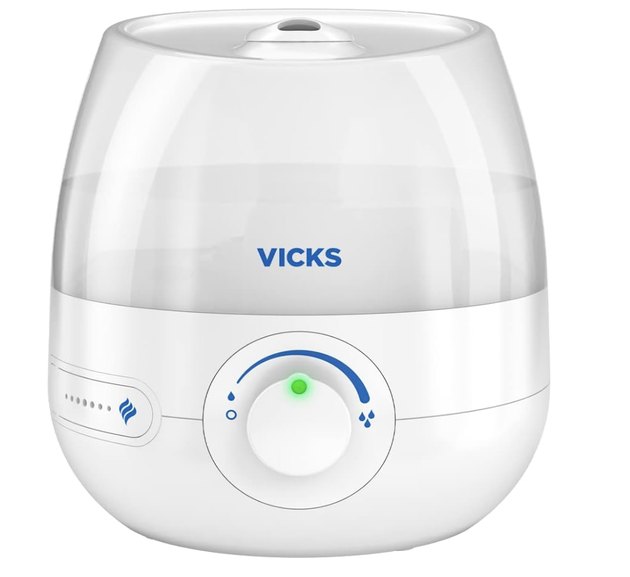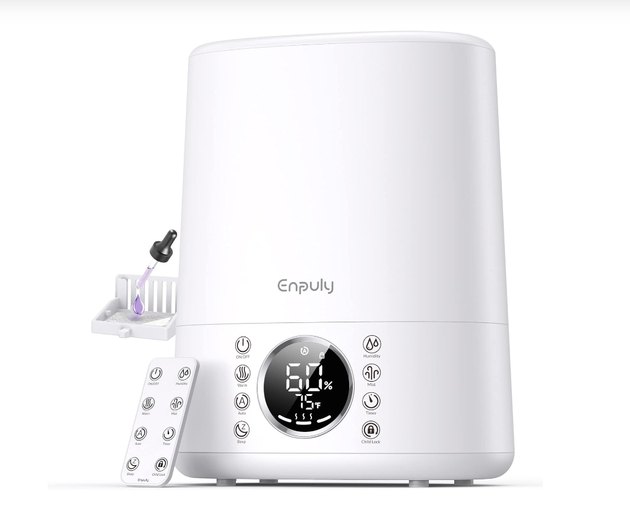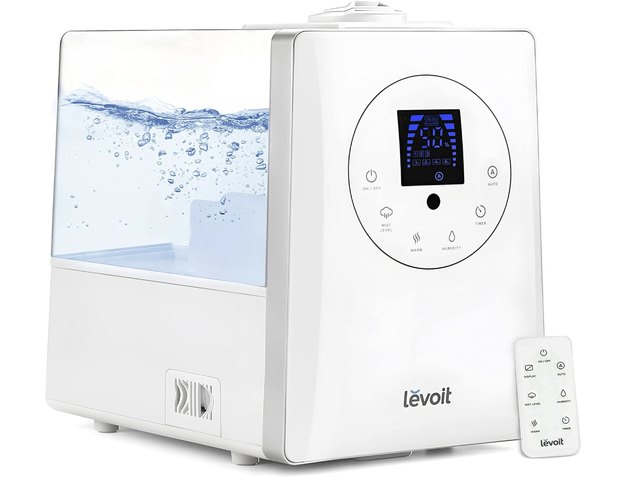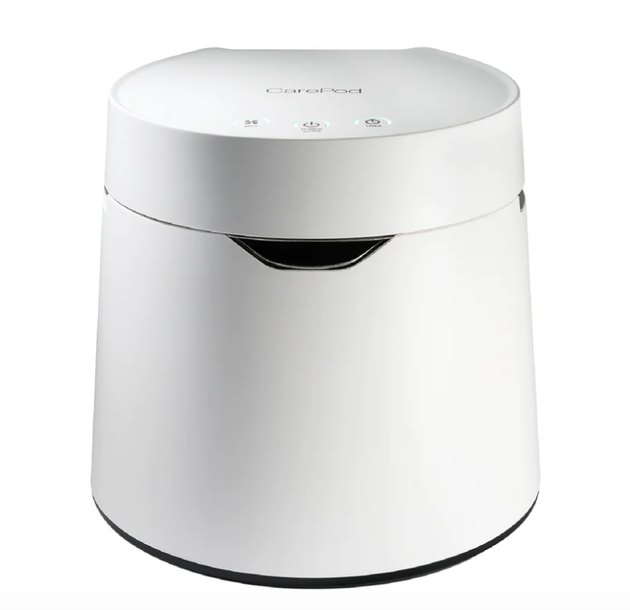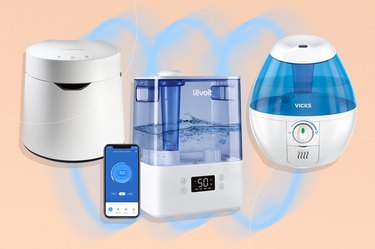
Plagued by coughing, sniffles, dry skin or allergies? Dry indoor air can make matters worse — but using a humidifier could help you feel a little better.
Very dry air can cause the airways in your nose and throat to become irritated or inflamed, according to the National Library of Medicine (NLM). A humidifier puts more moisture into the air, which may help soothe inflamed passages and break up mucus to relieve stuffiness and congestion.
Video of the Day
Video of the Day
Only problem is, the number of choices on the market is downright dizzying. Luckily, we've narrowed down your choices with these top-rated picks.
The Best Humidifiers for Colds, Dry Skin and Allergies
- Best Overall: Levoit Classic 300S Humidifier ($69.99, Amazon)
- Best on a Budget: Vicks Mini Filter-Free Cool Mist Humidifier ($34.99, Amazon)
- Best Warm- and Cool- Mist Humidifier: ENPULY 6L Top Fill Warm and Cool Mist Humidifier ($89.99, Best Buy)
- Best for Extra Dry Spaces: Levoit Hybrid Ultrasonic Humidifier LV600HH ($87.30, Amazon)
- Easiest to Clean: Safety 1st Stay Clean Humidifier ($79.98, Amazon)
- Quietest: Carepod Stainless Steel Humidifier ($206.25, Hellocarepod.com)
- Best Ultrasonic: AquaOasis Cool Mist Humidifier ($29.96, Amazon)
- Best Desktop: MOVTIP Portable Mini Humidifier ($17.99, Amazon)
How We Chose
We tapped some allergists and combed through customer reviews to find the best humidifiers in each category. Our criteria for this list include:
- Cleanliness
- Design
- Effectiveness
- Safety
For more information on how we choose and cover products, click here.
1. Levoit Classic 300S Humidifier
2. Vicks Mini Filter-Free Cool Mist Humidifier
3. ENPULY 6L Top Fill Humidifier
4. Levoit Hybrid Ultrasonic Humidifier LV600HH
5. Safety 1st Stay Clean Humidifier
6. Carepod Stainless Steel Humidifier
7. AquaOasis Cool Mist Humidifier
8. MOVTIP Portable Mini Humidifier
What to Look for in a Humidifier
Must-have features? Warm-mist or cool? And do you really need to clean your humidifier every day? Here are all the details you need to know before making your purchase.
1. Customizable Controls
Humidifiers aren't one-size-fits-all. The best options have variable settings that allow you to customize the moisture level to your preferences, so your space doesn't get too soggy, says Carlyle Stewart, MD, an internist with Texas Health Presbyterian Hospital Plano.
Auto shut-off functions are also important, so the machine won't keep running after the air has reached your desired humidity level.
2. Size
Make sure the humidifier is the right size for the room you plan to use it in too, Dr. Stewart says. While an oversized humidifier might seem more powerful, it could end up over-saturating the air and lead to mold growth.
3. Cool-Mist vs. Warm-Mist
Consider whether you'd rather use a cool-mist humidifier or a warm-mist one. Both are equally effective at getting moisture into the air, according to the Mayo Clinic.
Cool-mist humidifiers have the benefit of being safer, because warm ones can cause burns if a person accidentally touches it or bumps into it. For this reason, warm-mist models should never be used in children's rooms, per the NLM.
On the other hand, warm-mist humidifiers may be less likely to transmit fungi or other harmful materials that can form in standing water. "They appear to generally remain free of bacteria and fungi systems because the water is essentially boiled before being released into the air," Dr. Stewart says. So if you opt to use a cool-mist model, you'll need to be extra careful about cleaning it.
4. Ultrasonic vs. Evaporative
Ultrasonic humidifiers use ultrasonic vibrations to disperse water vapor, while evaporative humidifiers use a fan to push moisture through a filter, according to the Cleveland Clinic. Ultrasonic options tend to be smaller and quieter, and they have the benefit of not having to deal with changing or cleaning a filter.
Safety Tips for Using a Humidifier
1. Keep Humidity in Check
More moisture isn't necessarily better. The ideal humidity for an indoor space is between 30 and 50 percent, according to the Environmental Protection Agency (EPA).
Higher humidity levels, especially above 60 percent, can set the stage for mold growth. "That can exacerbate symptoms of allergy and asthma," Dr. Stewart says. Very humid air can also encourage dust mites and even pests like cockroaches, the EPA notes.
2. Use Distilled Water
Can you use tap water in a humidifier? Distilled water is safer, according to the NLM. Tap water has minerals that can build up in a humidifier and be dispersed into the air in the form of white dust, which could make it harder to breathe.
3. Clean It Often
Regular cleaning is key for keeping minerals, fungi and bacteria from building up in humidifiers, especially cool-mist models, Dr. Stewart says. You should drain your humidifier and clean and dry all of the parts thoroughly every one to three days, according to the manufacturer's instructions.
"The use of peroxide or vinegar or the manufacturer's recommended cleaning solution may be quite effective in keeping the unit clean," Dr. Stewart says.
If your humidifier uses a filter, be sure to replace it at the recommended intervals, too.
Is this an emergency? If you are experiencing serious medical symptoms, please see the National Library of Medicine’s list of signs you need emergency medical attention or call 911.
